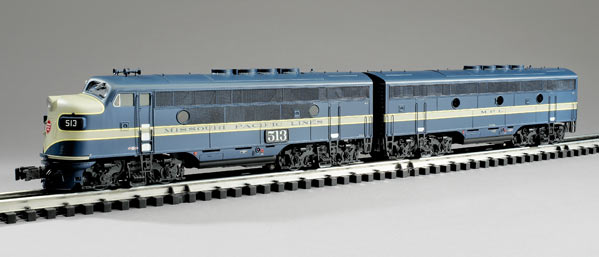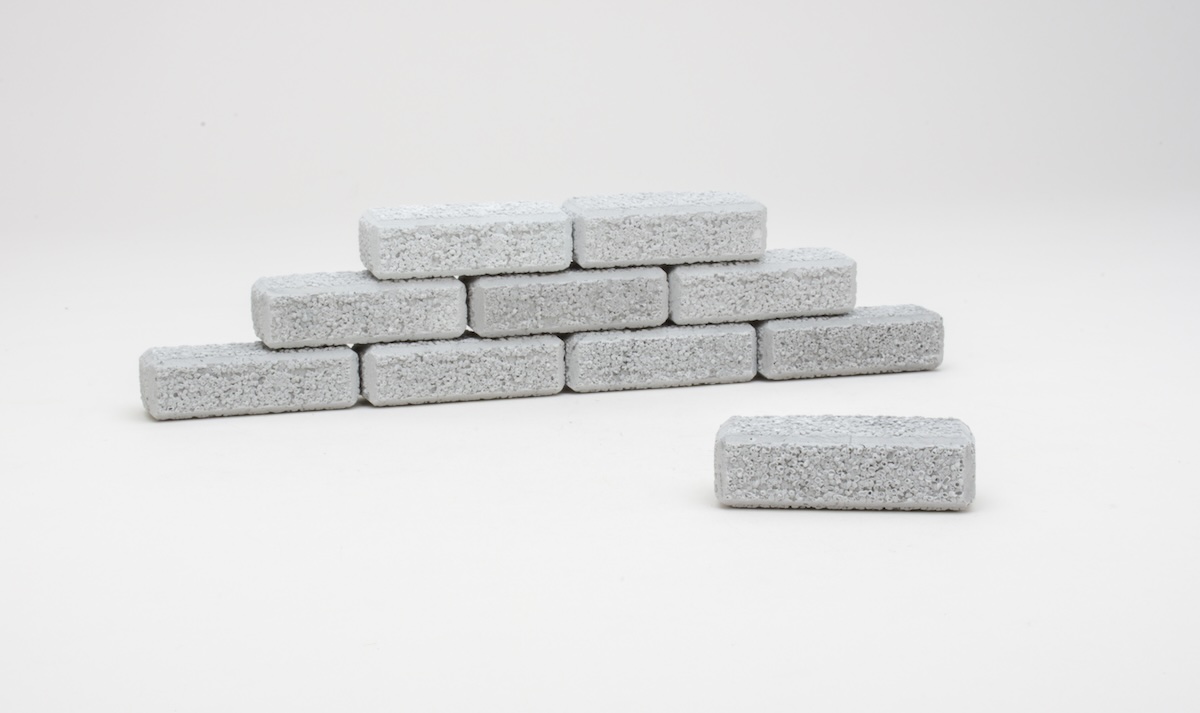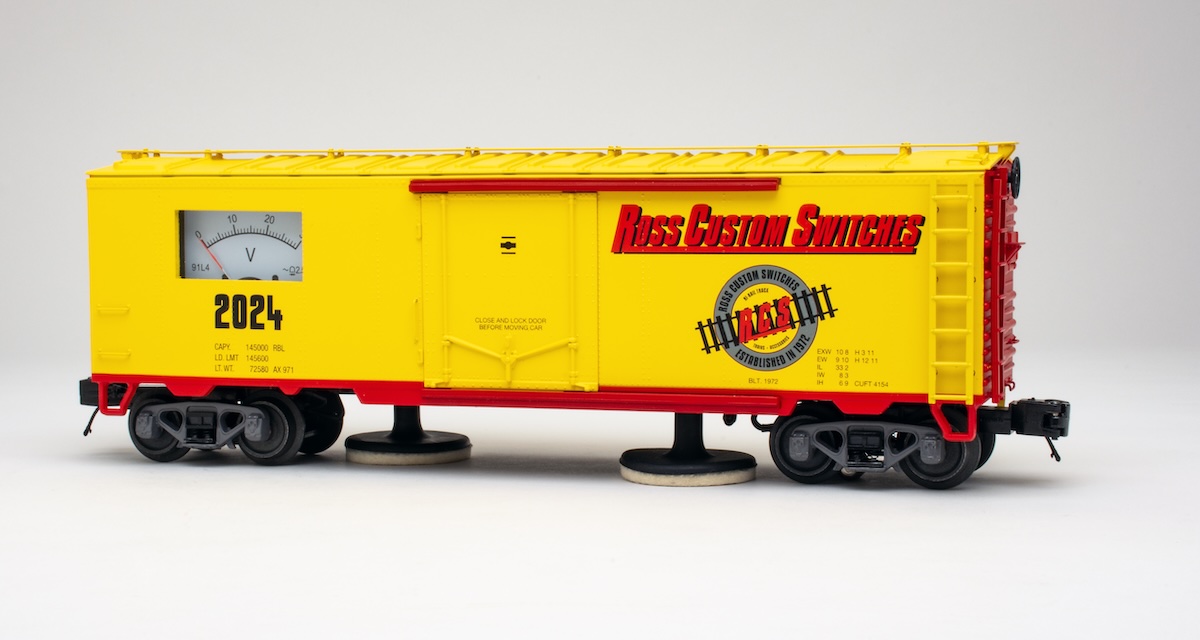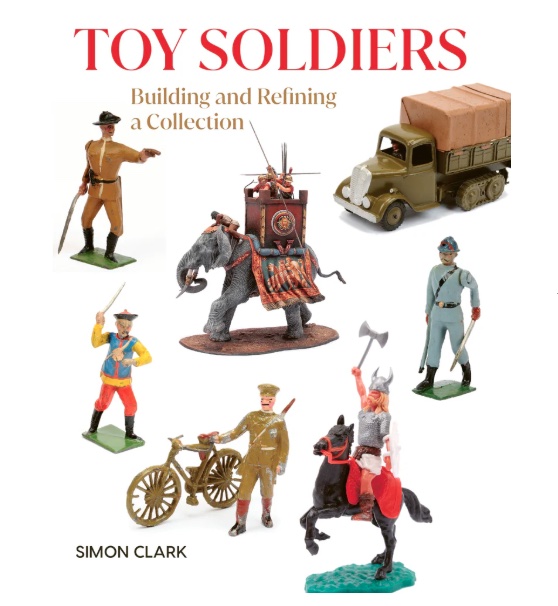And since even smaller engine terminals would have a fair-size work force, this would have added up to a significant draw on a railroad’s operating funds. So when diesels could demonstrate pulling power and overall reliability, that manpower and those taxable facilities were surplus, and steam was surely doomed.
Suffice it to say, the mass-produced and rigidly standardized Electro-Motive F3 diesel changed railroading forever.
Opening the box
We have before us today examples from the latest production run of F3s by Atlas O, a powered A-B F3 Phase II duo in Missouri Pacific colors.
The F3’s pilot is solid, but with a gap for a coil coupler. If you don’t like this look, you can swap out the factory pilot for another with a scale-sized knuckle coupler.
The rounded nose is wonderfully smooth to the touch. The headlight is at the top of the nose, and marker lights are placed just above the large number boards. The nose door appears to be an add-on piece, but I didn’t try opening it. It does have one of the most realistic handles I’ve seen. Two grab irons bracket the hatch.
The cab is illuminated and has two crew figures that are clearly visible.
Overall, the body has superb cast-in detailing, such as rivets (the rivets along the sides of the respective side door frames look great). Seams and structural supports all look good, and the overlay of see-through screens along the sides of the carbody.
The top of the shell finds four raised fans with add-on white blades beneath the top screen. You’ll also find 10 lift rings. The smoke unit’s exhausts are nestled between the fans.
The rear diaphragm is rigid plastic (as opposed to the rubber used on many models), but fear not, it does indeed pivot.
I am far from being a rivet counter. Still, it is often easy to miss details that differentiate one phase of F3 production from another. In the July 2008 issue of Classic Toy Trains, we reviewed a Boston & Maine F3 Phase I set made by Atlas O. As you’ll note from the photo of the B&M unit, it has three portholes compared to the two on the Missouri Pacific diesel, and there are significant differences in the side screens.
There were three smaller side screens along the upper part of the body, rather than the longer one on the MoPac. The MoPac screens also run lower, down between the portholes. The B&M unit has much smaller number boards, and a dynamic brake is buried behind the cab. This is visible by the exhaust screen topside.
So if your checklist is simply, “Yep, rounded nose, raised vents, and some portholes,” then you are missing some fun differences.
The Missouri Pacific paint scheme is as intricate a design as you’ll find applied to an O gauge model. Sure, the locomotive is basic blue, but the side stripe runs from the rear to the nose, then up and around the number boards, and up to the windshield.
A yellow-gold stripe divides the gray and blue, and it sets the curve around the number boards and by the windows. There is a gray stripe just above the pilot, as well.
In all cases the paint was neatly applied, and color separation was impressively clear and sharp.
On the test track
You’ll find controls for run/program, speed control, sound, and smoke as well as the volume control on the underside of the unit. To reach the 9-volt battery storage slot, you’ll need to remove the shell.
The A unit packs a coil coupler on the pilot. The other three couplers (one on the A and two on the B unit) are close-coupling dummy couplers.
The RailSounds package is good, and reproduction of the various sounds is solid. The horn sounds great!
Our conventional-mode low-speed average was 20.2 scale miles per hour, while our Legacy-command-mode low-speed was 7.9 scale miles per hour.
Our high speed was 116.8 scale miles per hour.
Drawbar pull for a single powered unit was 1 pound, 13 ounces (A unit) and 1 pound 8 ounces (B unit).
The Atlas O Phase II F3 looks good, and it is amazing how just a few simple changes in the tooling can uniquely alter a locomotive’s appearance.
Performance of the set was outstanding, and this model should be a contender for heading your railroad’s fastest freight!
Features: O-36 operation, two can-style motors, Lionel’s TrainMaster and RailSounds systems, Engineer-on-Board speed control, smoke unit, coil coupler on A-unit nose















I bought the SP Black Widow version and am not disappointed. I really like the prototypical close coupling of the units in the lash-up. Detail is superb, decoration accurate. Best of all, right out of the box runs great and no problems! Atlas has another winner.